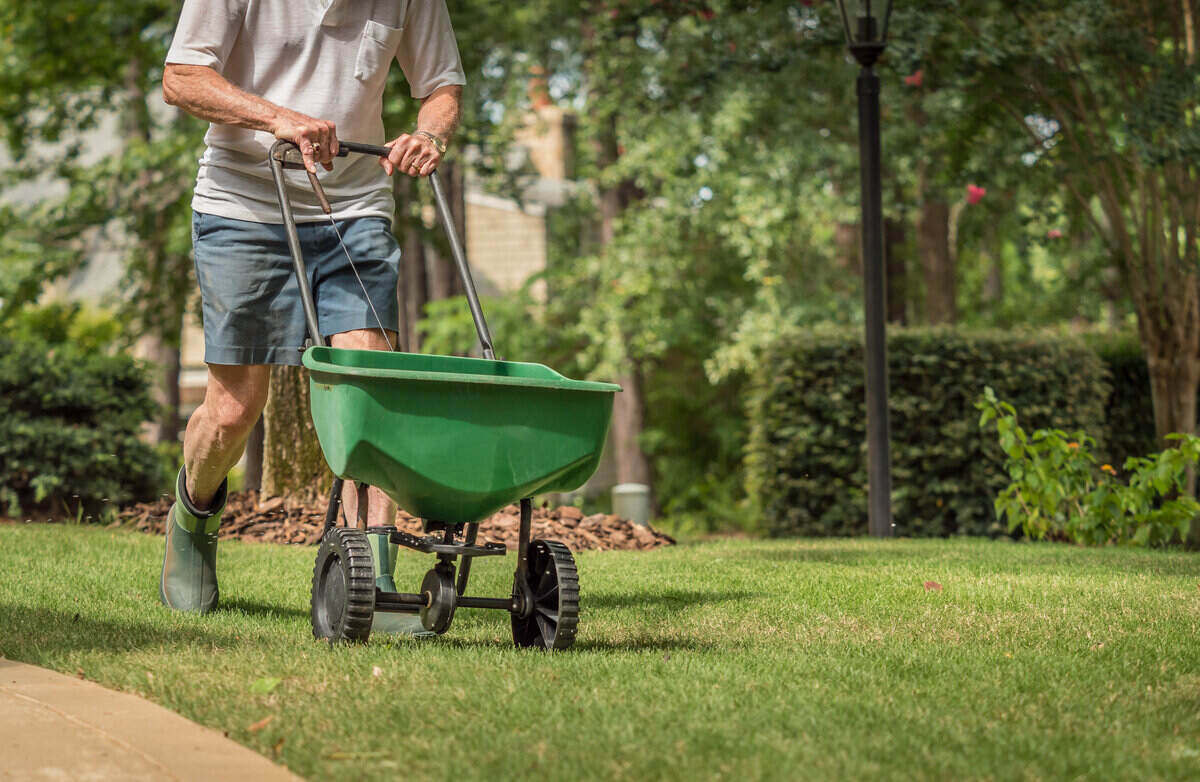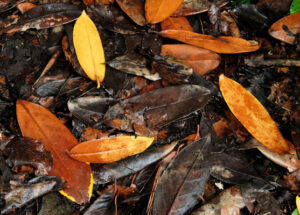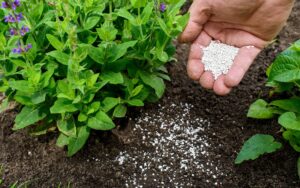Step-by-Step Guide to Fertilize a Lawn
Fertilizing your lawn is essential to maintaining a healthy, green yard. Proper fertilization not only ensures that your grass gets the nutrients it needs, but also helps it grow thicker, stronger, and more resilient to environmental stressors like drought, weeds, and disease. Here’s a step-by-step guide on how to fertilize your lawn effectively.
Step-by-Step Guide to Fertilizing a Lawn
Step 1: Test Your Soil
Before you start, it’s essential to test your soil to determine its nutrient content and pH levels. A soil test will let you know what nutrients your lawn needs, preventing over or under-fertilization. You can buy a soil test kit at garden centers or send a sample to your local agricultural extension service.
Step 2: Choose the Right Fertilizer
Select a fertilizer based on your lawn’s needs, determined by the soil test. Fertilizers are often labeled with three numbers representing the N-P-K ratio (Nitrogen-Phosphorus-Potassium). For example, a 10-10-10 fertilizer contains 10% of each nutrient. Nitrogen promotes grass growth and greening, phosphorus is essential for root development, and potassium helps with overall health and stress tolerance.
Step 3: Prepare Your Lawn
Mow your lawn and clear away debris such as leaves, twigs, or other obstructions. This allows the fertilizer to reach the soil more efficiently. Make sure the lawn is dry before application, as wet grass can cause fertilizer to stick to the blades and not get absorbed into the soil.
Step 4: Apply the Fertilizer
You can apply fertilizer using a broadcast spreader for even coverage. Walk steadily in straight lines across your lawn, overlapping slightly to ensure uniform distribution. Make sure to follow the manufacturer’s recommended application rate to avoid burning your grass.
Step 5: Water the Lawn
Watering helps the fertilizer penetrate the soil and reach the grass roots. Water the lawn thoroughly right after application, unless you’re using a slow-release fertilizer, which may not require immediate watering. Be cautious not to overwater, as it may wash away the fertilizer.
Step 6: Reapply as Needed
Depending on the type of fertilizer you use, you may need to reapply after a certain period. Slow-release fertilizers last longer, whereas fast-release fertilizers may need to be applied more frequently. Follow the recommended schedule for your grass type and climate.
Fertilize Lawn Schedule
A proper fertilizing schedule is key to maintaining a healthy lawn. The right timing depends on your grass type (cool-season or warm-season grass) and your local climate.
Cool-Season Grasses (e.g., Kentucky bluegrass, fescue):
- Early Spring (March-April): Apply a light fertilizer to help the grass green up after winter dormancy.
- Late Spring (May-June): Fertilize to promote strong root growth before the summer heat.
- Fall (September-October): Apply a slow-release fertilizer for winter prep and root strengthening.
Warm-Season Grasses (e.g., Bermuda, zoysia):
- Late Spring (April-May): Fertilize when the grass starts growing actively.
- Mid-Summer (June-July): Apply a mid-season fertilizer to keep the grass growing through summer.
- Late Summer (August): Fertilize one last time before growth slows down in fall.
Best Time to Fertilize Lawn
The best time to fertilize your lawn depends on your grass type and climate. Cool-season grasses grow most actively during the fall and early spring, making those the optimal times for fertilization. In contrast, warm-season grasses thrive in the summer heat, so late spring through mid-summer is ideal.
Spring (March-May): Fertilizing in early spring helps grass recover from winter dormancy. However, over-fertilizing in spring can cause excessive growth that may weaken the lawn during summer stress.
Fall (September-October): Fall is the best time for cool-season grasses because the temperatures are cooler, and the grass is actively growing. Fertilizing in fall strengthens roots, preparing the lawn for winter and giving it a head start in spring.
Fertilizing at the right time will give your lawn the nutrients it needs to grow green and lush while minimizing the risk of over-fertilization or nutrient leaching.
Fertilize Lawn in Fall
Fall is considered the ideal time to fertilize cool-season grasses. Fertilizing in fall promotes strong root growth, allowing the grass to survive the winter and emerge healthier in the spring. The cooler temperatures and increased rainfall also help nutrients penetrate deeper into the soil. A slow-release fertilizer is recommended for fall to provide a steady supply of nutrients throughout the dormant season.
Fertilize Lawn in Winter
Winter fertilization is generally not recommended unless you’re using a specific type of winterizer fertilizer. These fertilizers contain more potassium than nitrogen, which helps improve grass tolerance to cold temperatures. Applying a winterizer in late fall or early winter can be beneficial for cool-season grasses, helping them survive the winter and grow back vigorously in spring.
Fertilize Lawn in Summer
Fertilizing your lawn during summer can be tricky, especially if you’re dealing with hot temperatures. For warm-season grasses, summer is their peak growing season, so mid-summer fertilization helps maintain their health and vigor. Use a slow-release fertilizer to avoid over-fertilization, which can stress the grass and cause brown patches. Watering is crucial after applying fertilizer in the summer to prevent burning.
Fertilize Lawn in Spring
Spring is an important time to fertilize your lawn, but it’s essential to apply fertilizer with care. Early spring fertilization helps your lawn recover from winter, while late spring fertilization prepares it for summer. For cool-season grasses, focus on early spring, while warm-season grasses benefit more from late spring fertilization. Be mindful of not over-fertilizing during this season to avoid stimulating excessive growth, which can stress the lawn in summer.
Fertilize Lawn in Hot Weather
Fertilizing during hot weather requires extra care. High temperatures can stress your grass, making it vulnerable to burning. If you must fertilize during hot weather, use a slow-release formula and apply in the early morning or late evening when temperatures are cooler. Make sure to water the lawn thoroughly after fertilizing to prevent the fertilizer from sitting on the grass blades and causing burn spots.
Average Pricing of Lawn Fertilizer
The cost of fertilizing a lawn can vary significantly depending on the size of the area, the type of grass, and the type of fertilizer used. Here’s a breakdown of average prices based on different factors:
| Area/Plant Type | Fertilizer Type | Avg. Cost per Application |
|---|---|---|
| Small Lawn (1,000 sq ft) | Slow-Release | $20 – $50 |
| Medium Lawn (5,000 sq ft) | Organic | $60 – $120 |
| Large Lawn (10,000 sq ft) | Liquid Fertilizer | $100 – $200 |
| Warm-Season Grass | Synthetic Fertilizer | $30 – $75 per 1,000 sq ft |
| Cool-Season Grass | Organic Fertilizer | $25 – $70 per 1,000 sq ft |
Average Fertilizer Prices in Top 25 Cities in the USA
Here’s a table showing the average price of lawn fertilization in some of the top cities in the United States:
| City | Avg. Fertilization Cost |
|---|---|
| New York, NY | $150 |
| Los Angeles, CA | $120 |
| Chicago, IL | $130 |
| Houston, TX | $110 |
| Phoenix, AZ | $115 |
| Philadelphia, PA | $140 |
| San Antonio, TX | $105 |
| San Diego, CA | $125 |
| Dallas, TX | $100 |
| San Jose, CA | $135 |
| Austin, TX | $95 |
| Jacksonville, FL | $110 |
| Fort Worth, TX | $100 |
| Columbus, OH | $120 |
| San Francisco, CA | $150 |
| Charlotte, NC | $115 |
| Indianapolis, IN | $120 |
| Seattle, WA | $140 |
| Denver, CO | $130 |
| Washington, D.C. | $150 |
| Boston, MA | $145 |
| El Paso, TX | $100 |
| Nashville, TN | $115 |
| Detroit, MI | $125 |
| Portland, OR | $135 |
This pricing varies based on labor, the size of the lawn, and the type of fertilizer used. Always consult local providers for exact quotes.
Fertilizing a lawn before or after seeding is a common question among homeowners and gardeners who want to ensure their grass grows healthy and strong. The decision of when to apply fertilizer largely depends on the condition of the soil, the type of grass seed you’re planting, and your overall lawn care goals. In this article, we will explore the benefits of fertilizing before and after seeding, the importance of timing, and best practices to ensure successful grass growth.
Fertilizing Before Seeding
Applying fertilizer before seeding is a widely recommended practice because it helps prepare the soil with essential nutrients that grass seeds need to germinate and establish roots. This method is often referred to as “pre-plant” or “starter” fertilization.
- Soil Preparation: Before spreading seeds, it’s crucial to prepare the soil by aerating it and loosening the top layer. By fertilizing at this stage, the nutrients can penetrate the soil more effectively, providing a rich environment for the seeds to grow. Fertilizer rich in phosphorus is especially important during this stage as it promotes strong root development.
- Nutrient-Rich Soil: Fertilizer applied before seeding delivers nutrients like nitrogen (N), phosphorus (P), and potassium (K) directly into the soil. These nutrients will be readily available to the seeds as they begin to germinate, ensuring that the young grass receives the nourishment it needs to develop quickly.
- Immediate Growth Boost: When the soil is well-prepared and fertilized, it creates the ideal environment for seeds to sprout and take root. Fertilizing before seeding gives the new grass a head start and promotes faster growth, which helps establish the lawn more quickly.
- Balanced Fertilizer: When applying fertilizer before seeding, choose a balanced starter fertilizer with a ratio such as 10-10-10 or 12-12-12. This ensures that the soil receives a balanced dose of nitrogen, phosphorus, and potassium to support both germination and early growth.
Fertilizing After Seeding
Fertilizing after seeding can also be effective, particularly if you want to give the new grass an additional boost once it has started to grow. This method focuses on supporting the newly sprouted grass with continuous nutrient supply to ensure robust development.
- Post-Germination Support: Once the seeds have germinated, applying fertilizer provides ongoing nutrition that strengthens the new grass and encourages thick growth. Fertilizing after seeding ensures that the young grass blades develop resilience and can withstand environmental stress, such as heat or drought.
- Preventing Over-Fertilization: One advantage of fertilizing after seeding is that you can better gauge how much fertilizer is needed based on how the new grass is growing. Over-fertilizing can harm young grass, causing it to burn, so applying the fertilizer in stages after seeding allows you to monitor the lawn’s progress and adjust accordingly.
- Slow-Release Fertilizer: After seeding, it’s best to use a slow-release nitrogen fertilizer, which provides a steady flow of nutrients over time. This gradual feeding helps the grass continue to grow strong and healthy without overwhelming it with too many nutrients at once.
Best Practices
- Soil Testing: Before deciding whether to fertilize before or after seeding, it’s wise to conduct a soil test. This will help determine which nutrients are lacking in the soil and allow you to tailor your fertilization strategy accordingly.
- Watering: After fertilizing and seeding, make sure to water the lawn thoroughly but gently to avoid washing away the seeds. Consistent moisture is crucial during the germination phase.
- Timing: Apply fertilizer at the right time based on your climate and the type of grass you’re planting. Cool-season grasses, for example, benefit from fall fertilization, while warm-season grasses grow best when fertilized in the spring.
Conclusion : Fertilizing both before and after seeding
Fertilizing both before and after seeding can provide numerous benefits for your lawn. Fertilizing before seeding creates nutrient-rich soil that supports seed germination and early root development, while fertilizing after seeding gives new grass a boost during its growth phase. For the best results, consider testing your soil, using balanced or slow-release fertilizers, and ensuring proper watering. By following these guidelines, you can achieve a lush, healthy lawn in no time.






